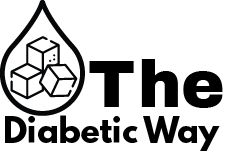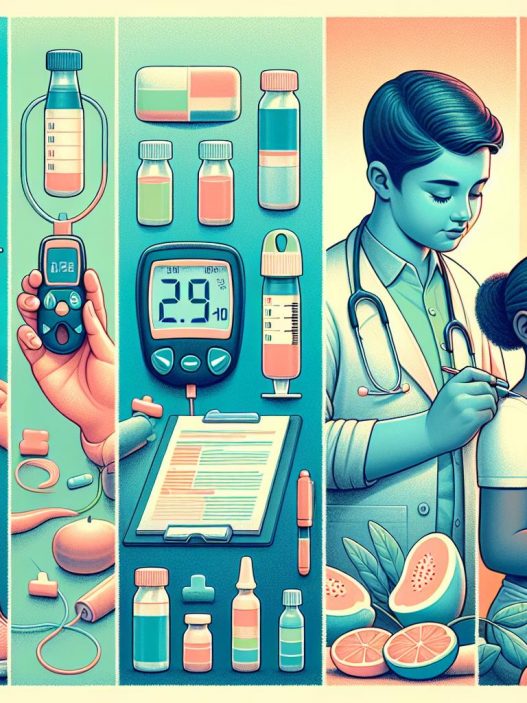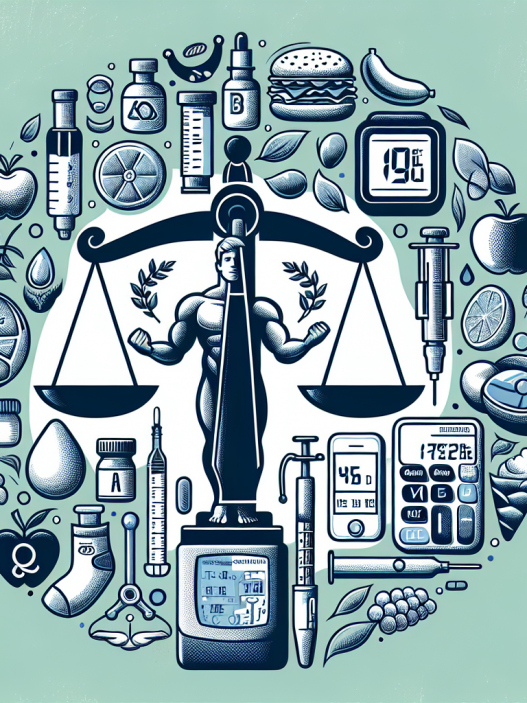# Exploring the Spectrum of Diabetes: Understanding Type 1, Type 2, and Gestational Diabetes
Diabetes is a chronic disease that affects millions of people worldwide, manifesting in several forms. The three most prevalent types—Type 1, Type 2, and Gestational Diabetes—each have unique characteristics, causes, symptoms, and management strategies. Understanding these differences is crucial for effective prevention, treatment, and living a healthy life. In this comprehensive guide, we will explore these three types of diabetes in detail, providing insights that empower patients, caregivers, and healthcare providers alike.
Understanding Type 1 Diabetes: Causes, Symptoms, and Management
Type 1 Diabetes (T1D) is an autoimmune condition that primarily affects children and young adults, though it can occur at any age. In T1D, the body’s immune system mistakenly attacks insulin-producing cells in the pancreas, leading to little or no insulin production. This lack of insulin means glucose cannot effectively enter the cells, resulting in high blood sugar levels. While the exact cause of T1D remains unclear, genetic predisposition and environmental factors are thought to play significant roles.
The symptoms of Type 1 Diabetes often develop suddenly and may include excessive thirst, frequent urination, extreme hunger, unintended weight loss, fatigue, and blurred vision. Because of the rapid onset of these symptoms, Type 1 Diabetes is commonly diagnosed in emergency situations. To manage the condition, individuals must monitor their blood glucose levels regularly, administer insulin injections or use an insulin pump, and maintain a balanced diet and regular exercise routine. The use of continuous glucose monitors (CGMs) has revolutionized the management of T1D, allowing for real-time tracking of blood sugar levels.
Living with Type 1 Diabetes poses unique psychological and social challenges. Individuals may experience anxiety surrounding blood sugar management and a fear of hypoglycemia (low blood sugar) that can lead to serious health complications. Support networks, including diabetes support groups and education programs, can significantly improve mental well-being and offer coping strategies. The importance of adherence to treatment plans cannot be overstated, as consistent management can help prevent long-term complications such as neuropathy, nephropathy, and cardiovascular diseases.
Unpacking Type 2 Diabetes: Risk Factors and Lifestyle Management
Type 2 Diabetes (T2D) is the most common form of diabetes, accounting for approximately 90% of all diabetes cases. Unlike Type 1, T2D is characterized by insulin resistance, where the body does not effectively use insulin, coupled with a relative insulin deficiency over time. This form of diabetes is predominantly associated with lifestyle factors and tends to develop gradually, often without noticeable symptoms until complications arise.
Numerous risk factors contribute to the development of Type 2 Diabetes, including obesity, sedentary lifestyle, poor diet, genetic predisposition, and age. The World Health Organization (WHO) highlights the alarming rise in obesity rates and poor dietary choices as global epidemics contributing to the increase in T2D cases. Interventions focused on lifestyle modifications—including weight loss, increased physical activity, and improved dietary habits—have been shown to significantly reduce the risk of T2D.
Management of Type 2 Diabetes often involves a multifaceted approach that includes lifestyle changes, regular monitoring of blood glucose levels, and medications such as metformin or other glucose-lowering agents. Patients are encouraged to adopt a whole-food diet rich in fiber, lean proteins, healthy fats, and low in refined sugars and carbohydrates. Engaging in regular physical activity has been proven to improve insulin sensitivity and promote overall health. With the right combination of lifestyle changes and medical management, many individuals with T2D can achieve and maintain good blood sugar levels and lead fulfilling lives.
Exploring Gestational Diabetes: Impact on Mother and Child
Gestational Diabetes (GDM) is a form of diabetes that develops during pregnancy, affecting approximately 2-10% of pregnancies worldwide. It occurs when the body cannot produce enough insulin to meet the increased needs during pregnancy, resulting in elevated blood glucose levels. Despite often resolving after childbirth, GDM requires careful monitoring and management to protect both maternal and fetal health.
The risk factors for developing Gestational Diabetes include obesity, a family history of diabetes, previous GDM pregnancies, and specific ethnic backgrounds (such as African American, Hispanic, Native American, and Asian American). Women diagnosed with GDM are at a higher risk for developing Type 2 Diabetes later in life, making it essential to implement lifestyle modifications and regular screenings post-pregnancy. Monitoring blood sugar levels during pregnancy is vital for detecting GDM early and managing it effectively.
Management of Gestational Diabetes typically involves dietary changes, regular physical activity, and, in some cases, insulin therapy. A balanced diet that focuses on whole foods and complex carbohydrates can help regulate blood sugar levels. Physical activity, such as walking or swimming, not only aids in blood sugar control but also promotes overall well-being during pregnancy. Regular check-ups with a healthcare provider are crucial, as they can provide personalized care and guidance throughout the pregnancy journey to ensure the best outcomes for both mother and baby.
Long-term Effects and Complications of Diabetes: A Closer Look
Diabetes, whether Type 1, Type 2, or Gestational, can lead to significant long-term health complications if not managed effectively. Chronic high blood sugar levels can damage blood vessels and nerves, resulting in a range of complications that can affect multiple systems in the body. Some of the common complications include cardiovascular diseases, kidney damage (diabetic nephropathy), vision problems (diabetic retinopathy), and nerve damage (diabetic neuropathy).
Individuals with diabetes are at a higher risk of developing coronary artery disease, stroke, and hypertension due to the negative effects of prolonged glucose elevation on blood vessels. Regular monitoring of cardiovascular health, including cholesterol and blood pressure levels, is essential in preventing heart complications. Additionally, maintaining a healthy lifestyle and adhering to prescribed medications can drastically reduce the risk of cardiovascular issues.
Kidney damage is another critical concern for people with diabetes. Over time, high blood sugar can affect the filtering mechanism of the kidneys, leading to diabetic nephropathy, which may progress to kidney failure if not addressed. Regular kidney function screenings can help detect any abnormalities early, allowing for timely interventions. For those living with diabetes, it’s also important to pay attention to foot health, as nerve damage and reduced blood flow can lead to serious foot problems. Routine foot examinations and proper foot care can prevent complications that might lead to severe outcomes.
Prevention and Awareness: Your Role in Diabetes Management
Prevention and awareness play crucial roles in managing diabetes effectively. With the rising prevalence of diabetes worldwide, understanding the risk factors and taking proactive measures to prevent its onset is paramount. For Type 2 Diabetes, lifestyle changes focusing on healthy eating and regular physical activity can significantly reduce the risk. Community programs that promote health education and wellness initiatives can empower individuals to make positive lifestyle choices.
For those at risk of developing Gestational Diabetes, early screening during pregnancy is vital for timely detection and management. Pregnant women should be educated on the risk factors, symptoms, and the importance of a balanced diet and physical activity. Engaging in support groups and educational classes can provide women with the resources they need to navigate their pregnancies safely, promoting both maternal and fetal health.
In addition to personal prevention strategies, advocacy and support for diabetes research and public health initiatives can help raise awareness and improve resources for individuals affected by diabetes. Initiatives directed at improving access to healthcare, education, and resources can enhance the quality of life for those living with diabetes and reduce its burden on communities.
—
In conclusion, understanding the spectrum of diabetes—from Type 1 to Type 2 to Gestational Diabetes—is essential for effective management and prevention. Consistent awareness, education, and proactive healthcare can help individuals lead healthy lives while minimizing complications. Let’s unite in our efforts to combat diabetes and empower those at risk or living with the condition to thrive.






















